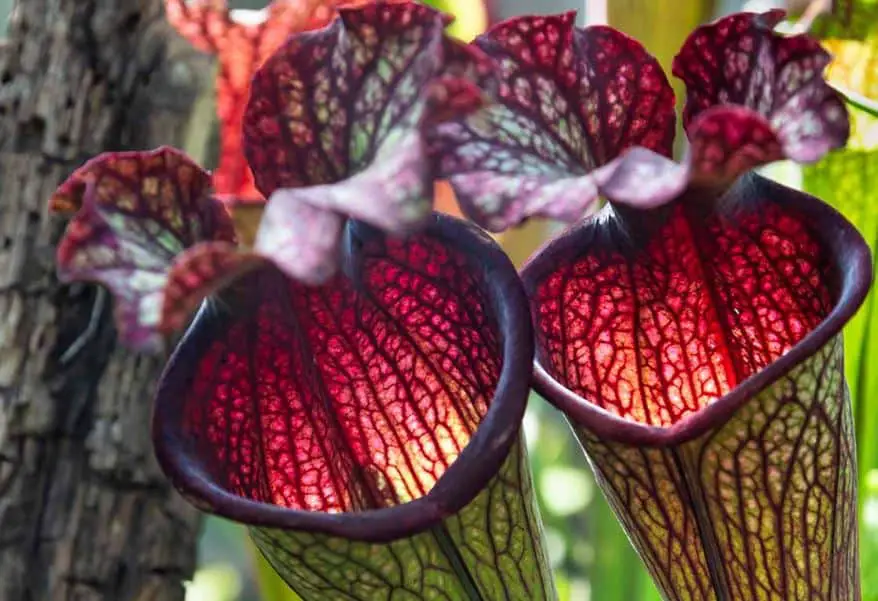North American natives include Sarracenia, sometimes known as pitcher plants. These traditional carnivorous plants employ captured insects to supplement their food requirements. These species often grow near water and need damp environments. Because most types are not very cold-tolerant, winter pitcher plant maintenance is crucial.
Some exposure to cold temperatures is required during pitcher plant dormancy. However, most are relatively easily below USDA zone 7. Moving or covering the plants from the cold weather will be necessary to overwinter pitcher plants in colder climates.

A Few Words About Pitcher Plants
Bog plants, known as pitcher plants, are often cultivated in water gardens or along the edge of water features. In North America, the genus Sarracenia has 15 distinct types. The majority thrive in Zone 6 and can easily withstand cold spells there.
Zone 7 plants like S. rosea, S. minor, and S. psittacina need a little assistance when freezes happen but can often endure cold weather outdoors. Sarracenia purpura, the species most tolerant to cold, can endure zone 5 outdoors.
Can pitcher plants survive the winter inside? Any pitcher plant is appropriate for cultivation under controlled circumstances in a greenhouse. Smaller kinds may be taken inside for the winter, provided enough airflow, humidity, and warmth.
Winter Plant Care For Pitcher Plants
USDA zone 6 plants are accustomed to brief cold temperatures. Pitcher plant dormancy necessitates a freezing period followed by warm temperatures that signal the plant to emerge from its dormant state. All species of Sarracenia depend on the chilling requirement to let them know when it’s time to start growing again.
Apply a thick layer of mulch at the base of the plants during periods of intense cold to shield the roots. Break the ice and maintain a full water level in the trays if plants grow in the water. You must bring pitcher plants inside to care for them over the winter in colder climates.
S. purpurea species in pots may survive outside in a protected area. Bring all other types into a cold, covered space, such as a garage or an unheated basement.
When caring for pitcher plants throughout the winter, reduce watering and avoid fertilizing the less hardy varieties.
Can a Pitcher Plant Survive The Winter Indoors?
This is a very good query. As with any plant, pitcher plants must overwinter successfully if their environment is replicated. This implies that each species will need a range of normal temperatures, varying dormancy lengths, and somewhat varied location and growth circumstances. Overall, it is reasonable to state that pitcher plants need warm, wet, peaty, or acidic soil, medium light levels, and at least 30% humidity for optimum growth.
It might be challenging to provide for all of these needs in the home setting. The plants’ growth requirements have slowed since they have been dormant for three to four months. Reduce the quantity of water potted plants get, move them to a low-light location below 60 F (16 C), wait three months, and then gradually restore the plant to increased light and heat levels.

